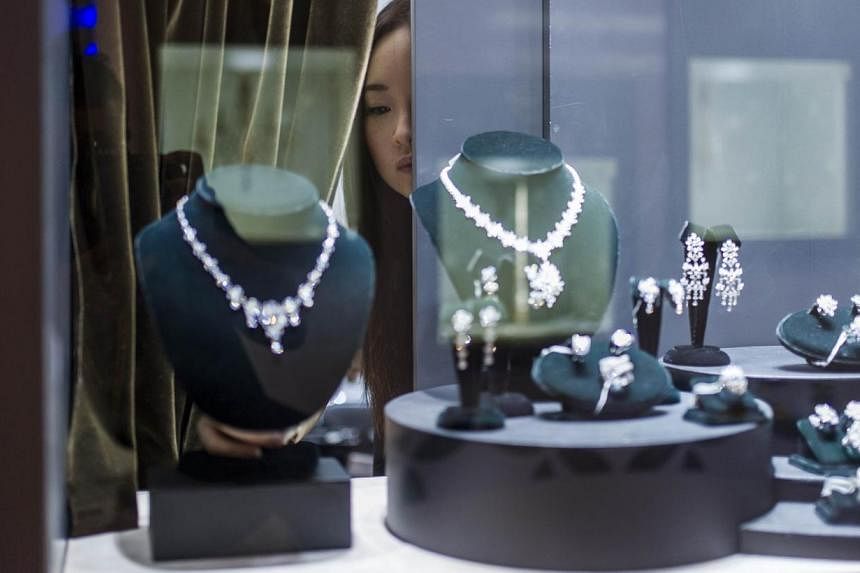Diamond jewellers are looking to mine a fast-growing Chinese market.
Demand for the precious stone has reached a record high, with global sales at an estimated US$79 billion (S$99.6 billion) last year, according to an inaugural industry report by the world's largest supplier of diamonds De Beers.
Of this, bedazzled Chinese buyers - switching their fancies from gold and jade to diamonds - are the main driving force, accounting for about 15 per cent of global demand last year.
Based on the current trajectory, China's market share will increase to 20 to 25 per cent in a decade and could soon surpass that of the United States, long the world's top market with 40 per cent of global sales last year, says De Beers' executive head of strategy and corporate affairs Bruce Cleaver in an interview with The Straits Times.
However, last year saw a relative slowdown in growth, possibly due to China's wide-ranging crackdown on corruption - a campaign that has hit mainland demand for luxury items from watches to cognac.
Sales of polished diamonds in China grew 14 per cent last year - an impressive figure, but below the 20 per cent compounded annual rate of growth from 2008.
Mr Cleaver says that the company has seen "very little impact" from the anti- graft movement, arguing that diamonds are "given as gifts between husbands and wives" rather than to officials - though, he later admits, they could be given to mistresses as well. Officials with high-maintenance "second wives" have been targeted as part of the campaign.
Chinese industry traders at the annual Hong Kong Jewellery and Gem Fair - at which the De Beers report was released yesterday - say that they have observed some impact on their business.
A Shanghai trader who wanted to be known only as Ms Hu says: "The fan fu (anti-corruption) campaign seems to have affected demand, especially for the bigger diamonds.
"These are the ones that are given as 'gifts'."
This seems to coincide with statistics collated by Bloomberg news agency that showed that the average best price for top-quality one-carat diamonds was US$7,852 on Aug 4, a 30 per cent drop from its peak in July 2011.
Another trader, from Guangdong, Mr Zhang Wanzhen, also says that his company has noted a dip in growth, though he is not sure if this is due to the anti-corruption campaign or a slowing Chinese economy in general.
Beyond the short term, the future of China's diamond market is very bright, says Mr Cleaver.
The De Beers report surveyed over 10,000 women in urban China and found that 48 per cent of respondents selected fine jewellery as their most coveted object or experience.
It is more popular than a designer handbag, an overseas holiday or a luxury watch.
And it is not just the young craving for diamonds. Older customers are selecting the sparking stones instead of jade as they were wont to do in the past for anniversaries, says Mr Zhang.
There is much room for the market to expand in China, with only 20 per cent of China's urban dwellers owning diamond jewellery as opposed to 70 per cent in the United States, the De Beers report notes.
Chinese consumers also tend to buy diamonds at different times of the year - Chinese New Year, the Chinese Valentine's Day in August and the Golden Week holidays - compared to buyers in the West shopping for Thanksgiving and Christmas.
This means that the industry can diversify its sales throughout the year, says Mr Cleaver.

